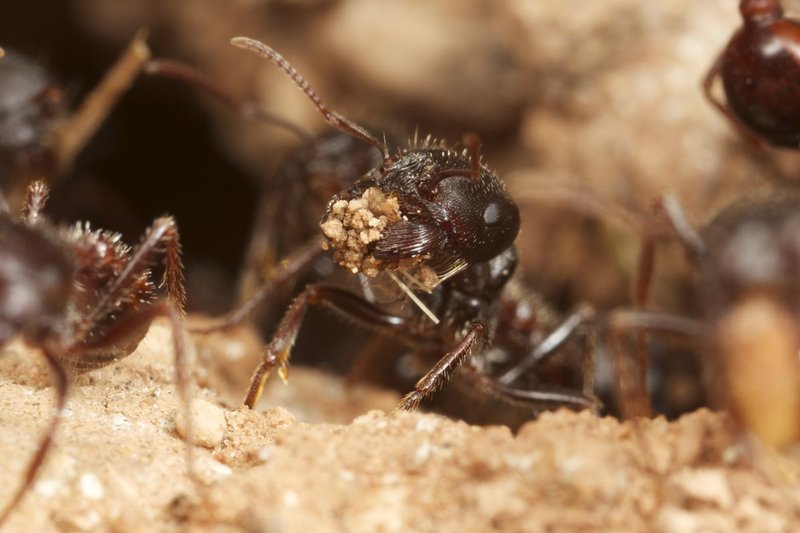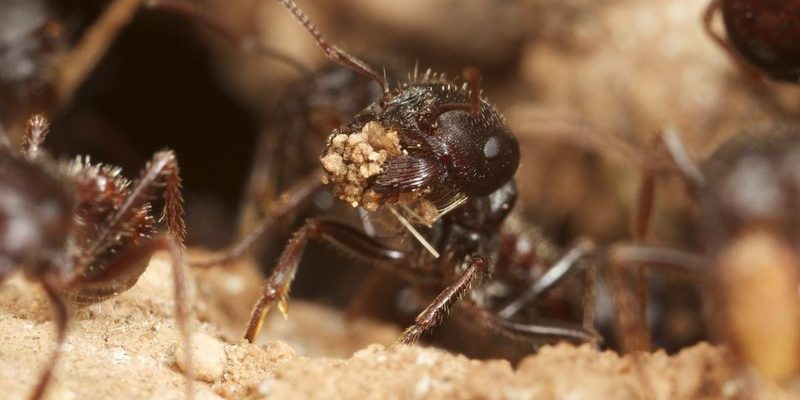
Imagine ants as the busy little workers of nature, each one contributing to a larger community. Just like our own cities, their colonies are complex systems. They communicate, build, and forage in harmony. However, the stability of their world is being challenged. In this article, I’ll dive into how climate change affects ants and, ultimately, our environment. We’ll explore everything from their habitats to their food sources, shedding light on why these changes matter to all of us.
How Climate Change Affects Ant Habitats
Ants thrive in diverse habitats, from forests to deserts. Each species has its own specific requirements for temperature, humidity, and food sources. As climate change alters these conditions, ants must adapt or face dire consequences. In many regions, temperatures are rising, leading to habitat loss. This is especially evident in the delicate ecosystems where certain ant species—like the leafcutter ants—make their homes.
When temperatures soar, ants can become stressed. Just imagine being outside on a scorching day without any shade. Too much heat can lead to decreased foraging activity and even colony collapse. Many ants rely on cooler, shaded areas to thrive, so as climate change heats up their environments, they might have to migrate to cooler spots. This leads to a phenomenon called “range shifts,” where ants relocate to survive.
Moreover, changes in precipitation patterns can also disrupt their habitats. For instance, some ants require moist environments to thrive. With increased droughts in some areas, their living conditions may become inhospitable. This ultimately impacts their ability to reproduce and sustain healthy colonies.
How Climate Change Impacts Ant Food Sources
Ants are scavengers and foragers, relying on a diverse diet that includes nectar, seeds, and other insects. Climate change affects the availability of these food sources. As plant life shifts due to changing weather patterns, so do the plants that ants rely on for sustenance.
For example, as temperatures rise, flowering plants may bloom earlier or later than usual. If ants miss these critical windows, they might find themselves without the nectar they depend on. This can lead to food shortages, making it harder for colonies to thrive. You might be wondering: how does this affect the larger environment? Well, ants play an essential role in pollination and seed dispersal. When their food sources dwindle, it ripples through the entire ecosystem.
In addition, climate change can lead to the spread of invasive species, which can further disrupt the delicate balance of food networks. Invasive ants often outcompete native species for resources. This not only threatens native ant populations but also the plants and animals that depend on them.
Ants and Their Role in Soil Health
Ants aren’t just scavengers; they’re also integral to soil health. By tunneling through the ground, they aerate the soil, which helps with water drainage and the movement of nutrients. This is critical for plant growth. However, as climate change affects their populations, the benefits they provide to the soil can diminish.
When ant populations shrink due to habitat loss or food scarcity, soil quality can decline. This can lead to poorer plant growth, affecting everything from local flora to agricultural crops. In essence, if ants aren’t doing their part in maintaining soil health, we may see a decline in plant life, further exacerbating the effects of climate change.
You can think of ants as nature’s gardeners. They help break down organic matter, facilitating nutrient recycling. When they struggle, so does the entire ecosystem’s health.
Heat Stress and Behavioral Changes in Ants
Ants are cold-blooded creatures, meaning their body temperature is influenced by their surroundings. With rising temperatures, heat stress becomes a real issue. When ants become overheated, they may alter their behavior to cope. For instance, they might decrease their foraging activity or spend more time in shaded areas.
This change in behavior can impact their social structure. Ants typically work together to transport food and care for their young. When heat stress takes over, their efficiency drops. Imagine trying to carry groceries on a hot day; you just can’t work as well when you’re overheated. In the long run, reduced productivity can lead to smaller colonies.
Additionally, heat stress can also affect reproductive success. With warmer temperatures, the timing of reproduction may shift, leading to mismatched life cycles. This misalignment can cause further declines in ant populations, raising concerns regarding biodiversity.
The Interconnection Between Ants and Other Species
Ants do not exist in isolation; they’re part of a larger web of life. Their interactions with other species—both plants and animals—are essential for ecosystem balance. As climate change disrupts ant populations, it creates a domino effect.
For example, many birds rely on ants as a food source. If ant populations decline due to changing climates, the birds that feed on them could see their own populations fall. Similarly, many insects that share mutualistic relationships with ants might also be affected. Some species depend on ants for protection against predators, while ants in turn benefit from the sugary secretions these insects produce.
When ants disappear or become scarce, these delicate relationships start to unravel, impacting biodiversity and the health of entire ecosystems. It’s a reminder of how interconnected life is, where one change can lead to a cascade of consequences.
Strategies for Supporting Ant Populations Amid Climate Change
Now that we’ve explored how climate change affects ants, you might be wondering what can be done to support their populations. Here are some practical strategies:
- Preserve Natural Habitats: Support local conservation efforts to protect natural habitats where ants thrive.
- Plant Native Flora: Native plants attract local insect populations, including ants, fostering their habitats.
- Reduce Pesticide Use: Chemicals can harm not just target pests, but beneficial species like ants. Consider eco-friendly alternatives.
- Educate Others: Share what you’ve learned here with friends and family. Awareness is key to fostering an environment supportive of ants.
By being proactive, we can help maintain the balance of nature. Every small action counts.
Ants might be tiny, but they have huge roles in our ecosystems. As we’ve seen, climate change has far-reaching effects on these fascinating creatures, impacting everything from their habitats to their food sources. Supporting ant populations is crucial because they contribute to soil health, biodiversity, and even our food production systems.
In a world increasingly influenced by climate change, every action we take to protect these little workers can lead to significant positive outcomes. By understanding their role and advocating for their protection, we can help ensure a healthier planet for generations to come. So, the next time you see an ant, take a moment to appreciate the amazing work they do. After all, they’re not just pests; they’re vital players in the grand scheme of life on Earth.

